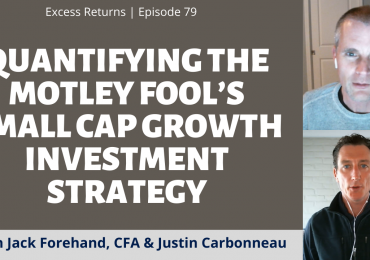In his bi-weekly Hot List newsletter, Validea CEO John Reese offers his take on the markets and investment strategy. In the latest issue, John looks at the issues of valuation and risk, and how they are intertwined.
Excerpted from the Aug. 31, 2012 issue of the Validea Hot List newsletter
Valuation Update
In general, the valuation picture isn’t too different from what it was four months ago. Several metrics are showing market to be fairly valued or undervalued, with a couple notable exceptions (the ten-year P/E ratio, Tobin’s Q, and the Stock Market/GDP ratio). On the whole, I think all of that means we are probably somewhere near the fair value range for the broader market.
Of course, more importantly, numerous individual stocks are trading at very attractive values. Take Hot List newcomer HollyFrontier Corp. The Dallas-based oil and gas firm trades for just 5.6 times trailing 12-month earnings and 6.2 times projected 12-month earnings. Its price/sales ratio is just 0.41, and its PE-to-growth ratio is a dirt cheap 0.14. All of this for shares of a company that has been growing earnings at a 41% rate over the long haul, has a 47% return on equity, and has more annual earnings than long-term debt.
HollyFrontier is far from alone. Overall, the five new stocks being added to the Hot List this week average trailing 12-month P/Es of about 10, price/sales ratios of about 1.2, PE-to-growth ratios of 0.36, and free cash flow yields of nearly 9%.
Value is important because many studies have shown that over the long haul, stocks with strong value characteristics have significantly outperformed more expensive stocks. But there’s another reason that value is so important, and it’s one that Bill Nygren touched on in a recent letter to his Oakmark fund shareholders. Nygren, one of the gurus I keep an eye on at my Guru Investor blog, has posted an excellent track record over the long-term. In his letter, he notes that his fund has been more volatile than usual this year. He offers a couple reasons for the change. One is that “investors today are less willing to accept cyclical risk than usual. Not surprisingly, it is the companies with cyclical exposure that seem to have the most day-to-day volatility, swinging up or down based on the words of various European politicians. The financials, technology and industrial stocks react more sharply than do the utilities, health care and consumer staples. Because valuation differentials have seldom been larger, we own a lot more of the former group than we do the latter.”
In the years since the financial crisis, we’ve also seen more volatility for the Hot List. From its 2003 inception through 2008, the portfolio’s average annual beta was 1.10. From 2009 through the present, its annual beta has averaged 1.26. But Nygren raises a key question: Does more volatility mean more risk? Often in stock market discussions, risk and volatility are used almost interchangeably. But Nygren thinks they aren’t one and the same. “To us, risk means losing money. Not just a daily price quote that goes down, but an error in estimating business value such that we want to sell our position despite the price being lower,” he says. “Based on our criteria, risk is highly dependent on the price paid for a stock. When a stock is priced at a premium to its business value, risk is high. When the price is at a large discount to value, risk is low.”
Nygren’s comments echo the “margin of safety” concept that the late, great Benjamin Graham famously touted, and I agree with him. If you are a long-term investor — and in my mind, if you’re not investing for the long term, you shouldn’t be investing — day-to-day volatility really shouldn’t be synonymous with risk. David Dreman, one of the gurus upon whom I base my strategies, has tackled this topic at length, with similar conclusions. “It has been known for decades that there is no correlation between risk, as the academics define it, and return,” he wrote in Contrarian Investment Strategies: The Next Generation. “Higher volatility does not give better results, nor lower volatility worse.”
To Dreman, risk was something much different than day-to-day fluctuations. “The major risk is not the short-term stock price volatility that many thousands of academic articles have been written about,” he wrote. “Rather it is the possibility of not reaching your long-term investment goal through the growth of your funds in real terms. To measure monthly or quarterly volatility and call it risk — for investors who have time horizons 5, 10, 15, or even 30 years away — is a completely inappropriate definition.” He said a realistic definition of risk recognizes the potential loss of capital through inflation and taxes, and includes 1) the probability your investment will preserve your capital over your investment time horizon, and 2) the probability your investments will outperform alternative investments during the period.
Nygren’s and Dreman’s comments about risk get to the heart of what good investing is all about. While most investors get caught up in day-to-day market fluctuations, leading them to make emotional decisions that often hurt their portfolios, these gurus focus on the long term, and aren’t swayed by faulty conventional wisdom. In order to beat the crowd, you have to think differently from the crowd, and their comments are a great example of such out-of-the-box thinking.
As for the current market and risk, while things have been calmer of late, the odds are that sooner or later the European debt crisis, the U.S. fiscal cliff, or some other issue will flare up and lead to significant volatility again. When that happens, remember Dreman’s and Nygren’s words. Short-term swings in prices of your holdings have little to do with making money over the long term — and isn’t making money over the long haul the point?
In my opinion, if you buy shares of good companies trading at attractive valuations, you’ll do just that — make money over the long haul. If, that is, you have the discipline to stick to your strategy and not bail when the market gets volatile; those who do bail more likely than not will end up selling low and buying high. It’s what we’re hardwired to do as humans: When danger arises, we flee. It’s an instinct that in many ways serves us quite well, but in the stock market — where many “dangers” are unfounded or overhyped — it leads us astray.
That’s why we use the disciplined, systematic approach we use in managing the Hot List. By allowing the cold, hard numbers to drive our buy and sell moves, we remove the potential for our own pesky emotions and gut feelings to lead us astray. In doing so, I believe we dramatically cut down on real risk — that is, the risk of not producing strong returns over the long term — regardless of what sorts of ups and downs our holdings are having on a day-to-day basis.







